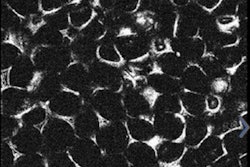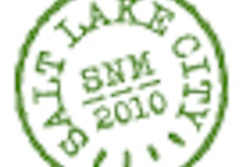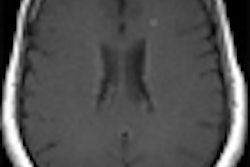Combining optical tomography and ultrasound may reduce the number of breast biopsies ordered to evaluate suspicious breast lesions that cannot be diagnosed using mammography, according to a new study published online in Radiology.
Researchers at the University of Connecticut investigated the potential of diffuse optical tomography with ultrasound localization as a way of distinguishing early-stage cancers from benign lesions (Radiology, June 22, 2010).
Lead researcher Quing Zhu, PhD, and colleagues studied 178 women who underwent ultrasound-guided diffuse optical tomography on an identified solid lesion, followed by biopsy. The study was conducted between 2004 and 2008 at the University of Connecticut Health Center and Hartford Hospital, both in Hartford.
The procedure uses a handheld probe with a commercially available ultrasound transducer in the middle and an optical source and detector fibers around the edges. Ultrasound locates the lesion, and diffuse optical tomography is performed by shining infrared light into the area and measuring light absorption at two optical wavelengths.
Zhu's team calculated total hemoglobin levels from the light absorption measured at two wavelengths and correlated the measurements with biopsy results. In the lab, tissue samples revealed two in situ cancers, 35 cancers that measured smaller than 2 cm, 24 cancers larger than 2 cm, and 114 benign lesions. The sensitivity and specificity of the technique (92% and 93%, respectively) were greatest when evaluating cancers smaller than 2 cm in size.
"Based on our results, we believe that ultrasound-guided diffuse optical tomography holds promise as an adjunct to diagnostic mammography and ultrasound for distinguishing early-stage invasive breast cancers from benign lesions," Zhu said. "We expect this technology will be used to help radiologists evaluate small to intermediate-size lesions that are harder to diagnose with conventional imaging technologies."
Zhu's research is supported by $1.4 million in grants from the U.S. National Institutes of Health (NIH) and $600,000 from the Donaghue Medical Research Foundation. Next steps include designing multi-institution trials for ultrasound-guided diffuse optical tomography.
By Kate Madden Yee
AuntMinnie.com staff writer
June 24, 2010
Related Reading
Needle biopsy best for breast cancer diagnosis, October 8, 2009
Study: How well does MRI-guided breast biopsy work? December 5, 2008
Optical tomography may help spot malignant melanoma, November 25, 2007
Presence of invasive cancer may cause MR-guided biopsy to miss DCIS, August 16, 2007
Copyright © 2010 AuntMinnie.com




















